Each year, Washington state’s worsening housing shortage means that more families struggle to pay rising rents or find homes they can afford to purchase. More people face homelessness. Young people move away or can’t move back because they can’t find apartments they can afford. The self-inflicted shortage of housing inside cities puts pressure outside cities, forcing more development to sprawl into the state’s forested areas, agricultural land, and wildlife habitat. Employees at growing companies can’t find housing they can afford. Local businesses, big and small, can’t find workers. And city-level leaders are hamstrung in the face of a statewide problem that spans outside their jurisdictions.
The core reason more and more Washingtonians cannot find homes they can afford is that there aren’t enough homes to go around. And a big reason for that is widespread local bans on everything but stand-alone houses on large lots, the most expensive and resource-intensive kind of housing there is.
This shortage can’t be solved by any one city or county alone. It requires elected officials working together at the state level. Fortunately, the Washington state legislature will soon have a chance to establish statewide standards for homes like triplexes and rowhouses in our job centers—state leadership much like that of our neighbors Oregon and California.
The 2023 middle housing companion bills HB 1110 and SB 5190, sponsored by Rep. Jessica Bateman (D-22) and Rep. Andrew Barkis (R-2) and Senator Yasmin Trudeau (D-27), would legalize “middle housing” in cities throughout the state. That is, the spectrum of housing options that exist between detached, stand-alone houses and large apartment buildings: modest-sized options that serve a broader range of people and families. For details on the bill, see this explainer article. In brief, the bill would legalize:
- Up to six homes per residential lot within a half-mile of frequent transit and
- Up to four homes per lot in cities with a population of 6,000 or more, or cities of any size within the contiguous urban growth areas surrounding Seattle or Spokane.
Washingtonians can’t wait, and their leaders can’t either. They should make 2023 the year of affordable housing, lifting exclusionary zoning laws by passing HB 1110 and SB 5190. Here’s why:
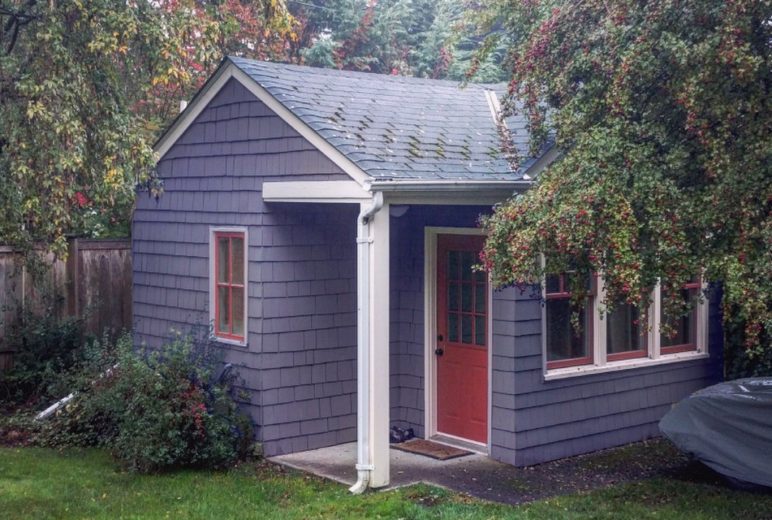
More backyard homes! Backyard cottage in Tacoma. Photo by Lauren Flemister, City of Tacoma, public domain.
Affordable home options and economic security for Washingtonians
Every additional dollar those families and individuals spend on their housing costs is money they can’t spend on other things, like food, medicine, education, or recreation.

A family spending more than 30 percent of its household income on housing is considered “cost-burdened.” In Washington state, nearly half of all households statewide had unaffordable housing costs in 2019, and 47 percent of renters at all income levels are cost-burdened, leaving too many perilously close to eviction and houselessness. Every additional dollar those families and individuals spend on their housing costs is money they can’t spend on other things, like food, medicine, education, or recreation.
- Re-legalizing middle housing will help fix the root cause of Washington’s housing affordability crisis: a shortage of homes. A primary cause of the shortage is exclusionary zoning laws that ban middle housing options from some three-quarters of residential land in Washington’s cities.
- Middle housing is inherently less expensive than stand-alone houses because the homes are generally modest in size and the cost of land is split between a few households—a triplex, for example, puts three homes on a city lot where only one is typically allowed, often under one roof. In contrast, detached-house zoning guarantees that only the most expensive kind of homes can ever get built in most residential neighborhoods.
- Middle housing types such as townhouses and rowhouses boost homeownership options. Washington has an especially acute shortage of affordable for-sale homes because the vast majority are detached houses on large lots, as mandated by current one-size-only zoning laws. Re-legalizing middle housing will increase the supply of for-sale homes and lower their cost.
- Re-legalizing middle housing will result in the slow and incremental addition of multi-family homes to existing communities. In many residential neighborhoods, middle housing is in fact a return to historic roots in housing designed for a diversity of residents, family types, and incomes. Status quo detached-house zoning actually encourages the opposite: modest older homes being replaced by pricey McMansions.
Righting historic wrongs for accessible, inclusive communities
In many residential neighborhoods, middle housing is in fact a return to historic roots in housing designed for a diversity of residents, family types, and incomes.

Vibrant cities welcome people from all walks of life, at all stages of life and ability, and from a vast diversity of racial, ethnic, and cultural communities. Building and designing for the myriad of people who wish to call Washington home will not just help more people find affordable options in their communities, but also address the legacy of redlining and other discriminatory practices against people of color.
- Historically, many cities enacted bans on middle housing to exclude Black Americans, and today those zoning restrictions continue to segregate neighborhoods by race and class. Re-legalizing middle housing will take important steps toward correcting those discriminatory practices still enshrined in local law and creating neighborhoods more welcoming to people of all incomes. The Black Home Initiative made Washington’s middle housing bill HB 1110 one of their top legislative priorities.
- Re-legalizing middle housing will help reverse the driver of economic displacement: prices and rents propelled skyward by the statewide housing shortage. Widespread local restrictions on middle housing throughout the state are a major barrier to meeting the demand for enough homes to control prices and rent, and more modest and affordable home types near jobs, schools, and transit.
- Middle housing helps keep cities across Washington affordable for small households, like seniors who wish to downsize and age in place or young couples looking for their first home together.
- Middle housing provides more options for people with disabilities or who need access to urban medical facilities for the services they provide.
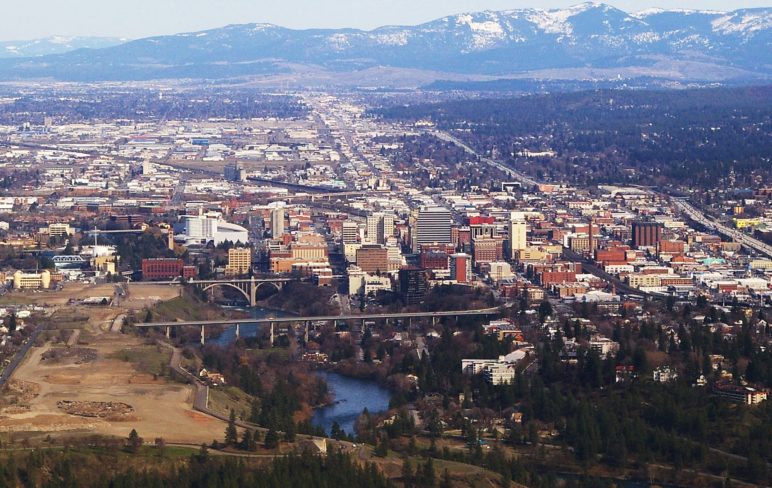
Spokane, Washington Spokane, Washington by Ron Reiring
Vibrant local economies
From 2010 to 2019, Washington added jobs twice as fast as it added housing, forcing Washingtonians to bid against each other for existing homes. Many towns and cities struggle to find essential workers, while ever longer commutes rob time from the workers who make our communities tick.
- Middle housing is a workforce housing solution that gives moderate-income, essential workers like firefighters, childcare and healthcare workers, and teachers more options so they can afford to live in the communities they serve.
- Re-legalizing middle housing benefits our local builders. Small-scale community-based builders, rather than deep-pocketed national developers, typically construct middle housing. Unfortunately, zoning laws only allow middle housing on a sliver of the land in most cities. Furthermore, bans on middle housing fuel the current wave of outside corporate speculation in detached houses that make available homes scarcer and more expensive.
- Re-legalizing middle housing will spur home-building and retrofits of existing housing that wouldn’t have happened otherwise. Besides creating well-paying construction jobs, that new construction generates increased sales and property tax revenues for local governments.
- Re-legalizing middle housing reduces infrastructure costs overall. Building the new infrastructure required to serve new houses spread out across previously undeveloped land is far more costly than tapping into existing infrastructure for infill homes. Incrementally rising demand for urban infrastructure is nothing that growing cities haven’t managed in the past.
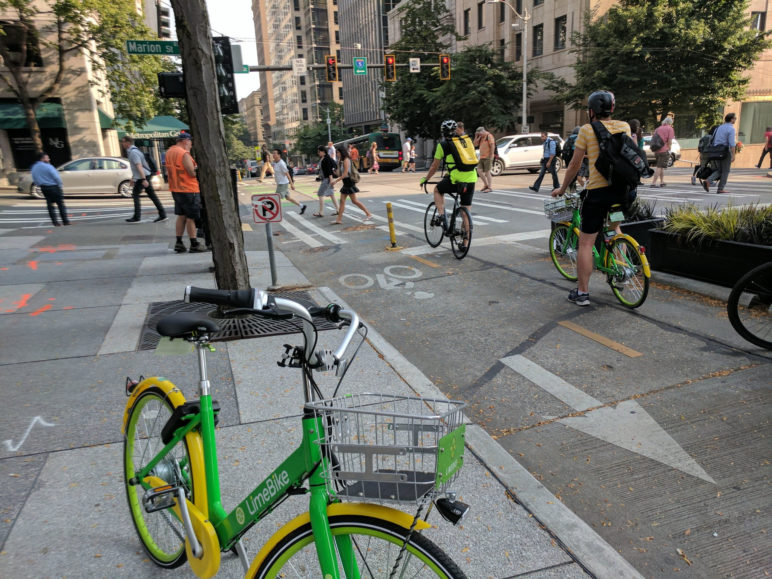
Lime bike waits near the 2nd Ave protected bike lane @ Marion by SDOT Photos used under CC BY-NC 2.0
Cleaner, greener communities—and less traffic!
When people can’t find homes in their budget near the places they work, learn, or socialize, they have to search farther and farther out of town, meaning longer, more exhaust-spewing commutes and higher infrastructure costs.
- Middle housing is inherently more energy-efficient than stand-alone houses because the homes are smaller and share walls. Replacing three detached houses with a duplex, a triplex, and a fourplex can cut a typical city block’s carbon impact by 20 percent.
- Re-legalizing middle housing helps neighborhoods become less car-dependent. Welcoming more neighbors creates walkable communities that can support more local shops and better transit. And the easier it is to live without a car, the lighter our carbon footprint, and the less we have to worry about parking and traffic, too.
Protections for treasured farmland, parks, forests, and wildlife habitat
When restrictive zoning laws ban building more homes in already-developed towns and cities, builders have to sprawl out into new land tracts, often gobbling up farmland or forests and threatening habitat for key species.
- Re-legalizing middle housing will reduce sprawl, yielding numerous environmental and community benefits. Allowing more homes in existing neighborhoods eases the pressure to build new homes on farm and forest lands further out.
- Re-legalizing middle housing allows more homes on less land, and that leaves more land for trees and greenspaces. Seattle has demonstrated that adding apartments and adding trees can go hand-in-hand. Adding middle housing to areas already urbanized will reduce development pressure outside cities and help preserve actual forests—where trees are most valuable for both habitat and carbon sequestration.
- Re-legalizing middle housing will reduce polluted stormwater runoff because new construction must adhere to stringent, modern environmental laws, typically yielding less runoff compared with the older structures replaced. A win for more housing choices is also a win for keeping the state’s waterways and salmon habitat healthier.
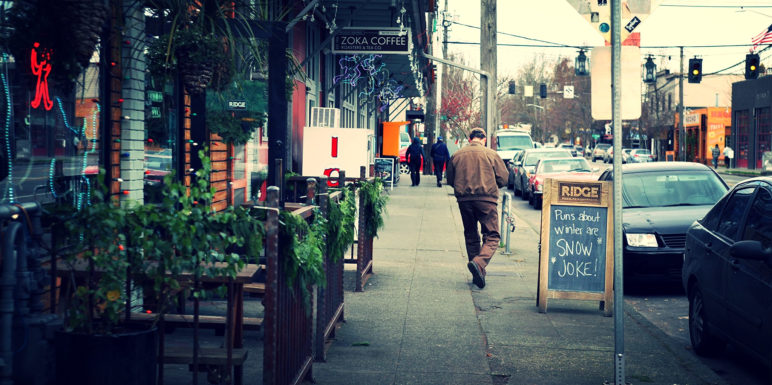
Seattle street by Seattle Department of Transportation used under CC BY-NC 2.0
Addressing homelessness head-on
A family spending more than 30 percent of its household income on housing is considered cost-burdened, and cost-burdened families and individuals are more likely to experience homelessness. In 2022, the Washington State Commerce Department’s statewide point in time count of people experiencing homelessness identified over 25,400 Washingtonians. Across the state, the total unsheltered population increased by 16 percent from 2020 to 2022.
- Legalizing more homes addresses one of the root causes of homelessness: Research shows that high rent and low vacancy rates are primary predictors of homelessness across the country. What causes high rents and low vacancies? A shortage of homes. When vacancy rates are low, as they are in cities and towns across Washington state, more people are more likely to end up unsheltered.
- Affordability solutions and community investments and supportive services to reduce and prevent homelessness go hand in hand for Washington communities.
A coordinated, common-sense response
- No one town or county can solve the housing shortage alone, since housing price pressures cross local boundaries. A state standard ensures that all communities share the responsibility for solving the housing crisis. A statewide housing crisis calls for statewide solutions. Local governments created the zoning that excludes low-income families from communities all across Washington. Today, local leaders are stuck in the same dynamic that impedes action on climate change: mutual progress depends on all jurisdictions acting on zoning reforms together.
- Washington’s Growth Management Act (GMA) has been effective at slowing sprawl but ineffective at supporting the necessary complement: infill housing in urbanized areas. The urgency of the housing crisis justifies establishing new statewide standards to allow more homes in residential neighborhoods.
- One of the most agreed-upon principles in urban planning is the need to concentrate new housing in existing urban areas. Legalizing middle housing is a relatively low-impact change that sets a statewide baseline for allowing infill home choices. In cities throughout the state, some of the most desirable neighborhoods have a diverse mix of detached houses and middle housing.
Time to build more Homes4WA
Washingtonians are ready for their leaders to act, with strong support for middle housing solutions. They are deeply concerned over homelessness and the availability of affordable housing for themselves and their loved ones.
Lifting bans on middle housing options in the heart of our communities will not only stabilize out-of-reach prices; it will lift up rather than push out people who work and learn in the state’s big towns and cities. These steps will also lay a foundation for addressing the overlapping challenges we face, maximizing the possibility for investments in affordable housing, anti-sprawl protections, climate emissions reductions, and preventing homelessness.

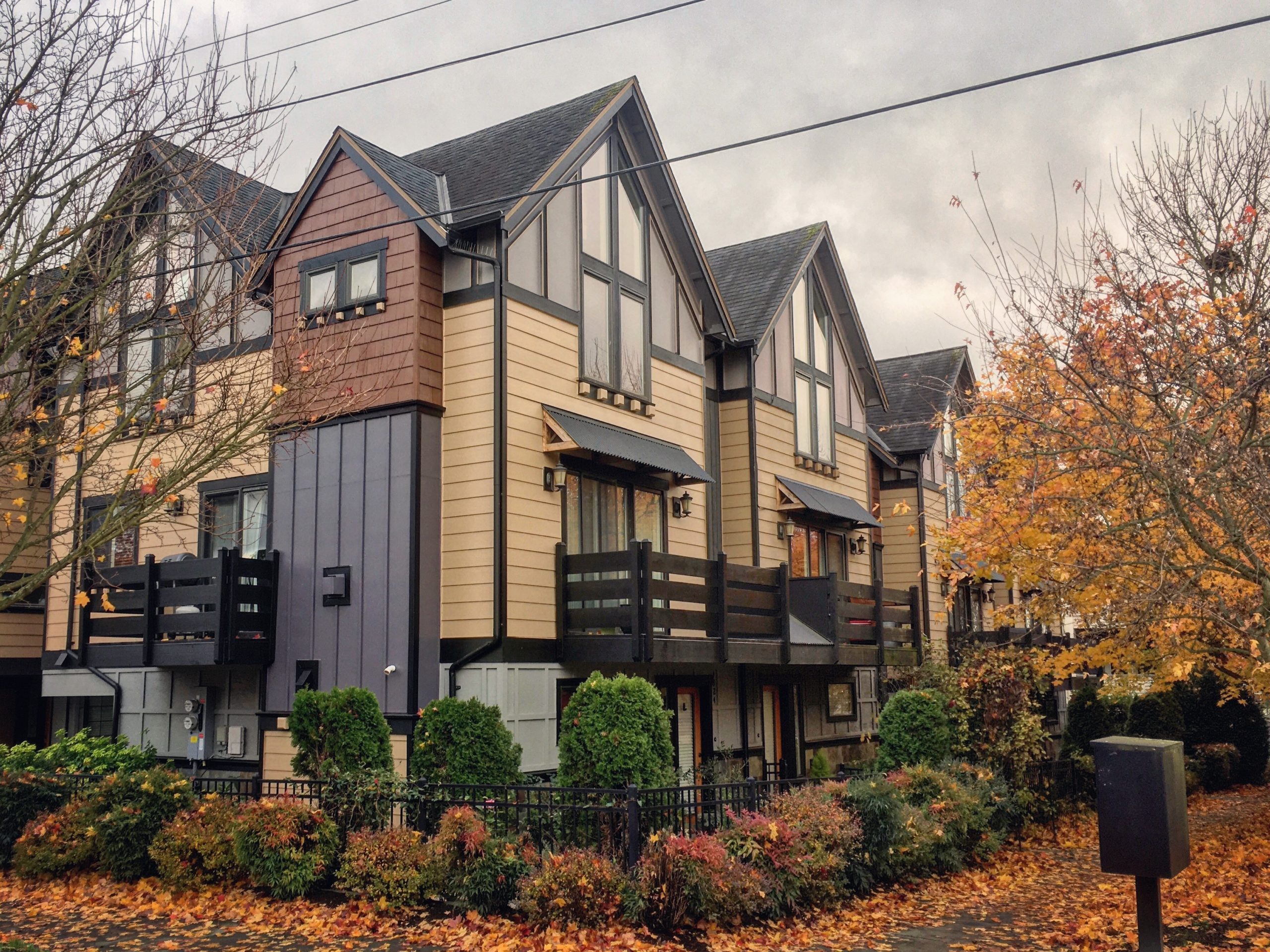
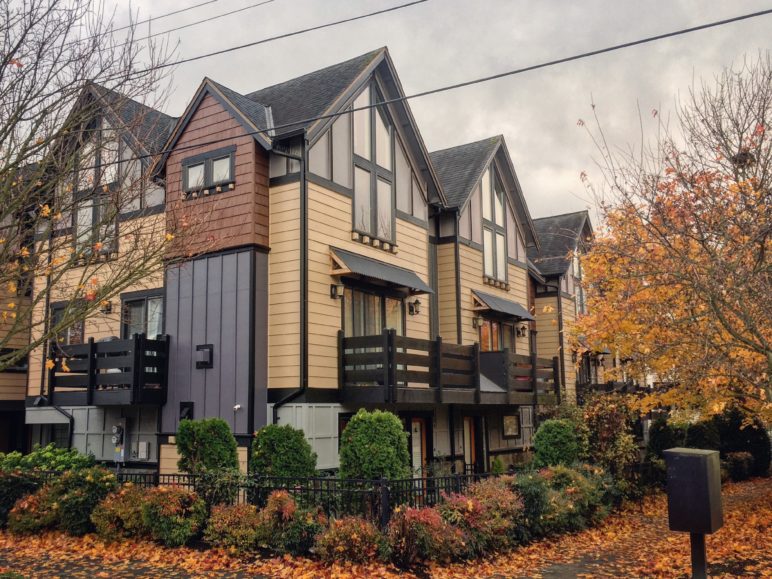


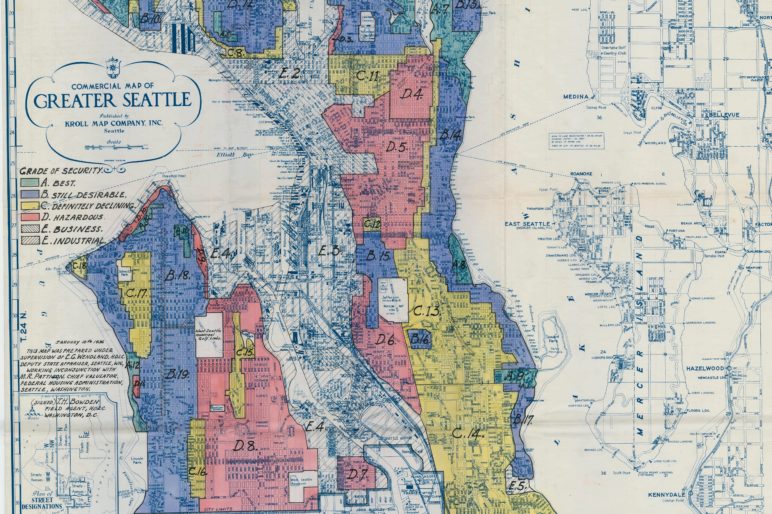

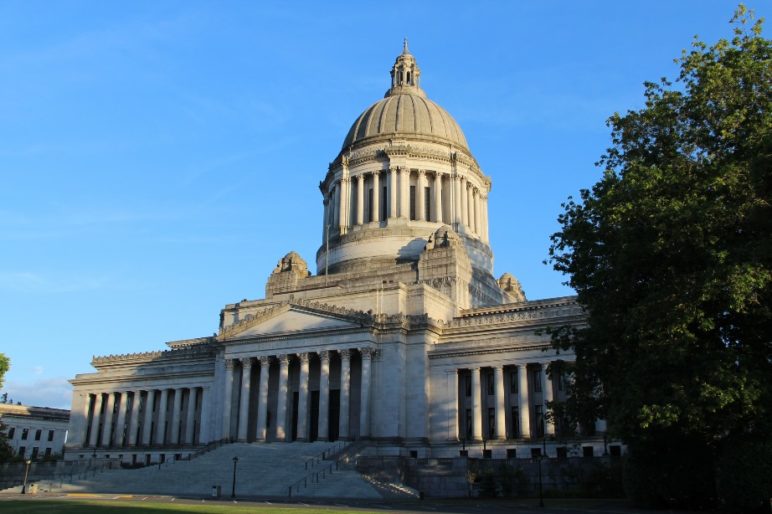






Kim M Dobson
Dan I am a radio host and have interviewed you before on KAOS 89.3 fm at the Evergreen State College and I have heard all the rationalizations to justify Missing Middle before . There are some blatant untruths in your arguments for . Missing Middle was passed in Olympia where Rep Jessica Bateman 22nd district lives I have endured her same repetitive arguments for several years . Falsehood one : Missing Middle does not protect the environment, in fact Ms Bateman lobbied for removing the SEPA (state environmental Policy Act ,a 52 point check list review ) EIS and Ecology storm water on site treatment rules in House Bill 1923 and 2343 in Beth Doglio’s bill making conference statewide . Falsehood 2 : MM HB 1923 does not create affordable housing it has no low actual income mandate and is by nature” Market Rate ” as both of these first 2 elements were pushed by the Master Builders association for maximum profit . Falsehood 3 :Opponents of the HB bill 1923/2343 MM bills are not racist as repeated by MM proponents . MM Market Rate construction is gentrification which discriminates against Low income people of all races because they can not afford the the rent costs and are pushed from existing older houses with reasonable rents by speculators buying older houses to demolish for the construction of 4/6 plex MM type housing . Your blog sounds as if the Master Builders wrote the script as the same language gets used in many cities to Justify Missing Middle zoning changes. It uses thinly veiled Identity politics to vilify the opponents to push profitable zoning as approved by the Chamber of Commerce and Master builders . Thanks for Listening ,(you should apply critical thinking to the justifications you have shared to help you understand where I am coming from . This will most likely be censored by your editors as my previous post s have been . )
Kim M Dobson
Hello Dan ,I see you chose to censor my comments , just a little too close to truth for you . The Chamber of Commerce and Master Builders I am sure they collectively appreciate the free public relations propaganda you share on Sightline ! Yours, Kim Dobson
Serena Larkin
Kim, a quick note that as a small organization, we often need a couple of days to moderate and respond to comments, and we do observe a code of conduct with our comments, as printed above. Dan will respond if and when he is able. Take care, and thank you for your patience. -Serena
Dan Bertolet
Sorry Kim, we’ll just have to agree to disagree.